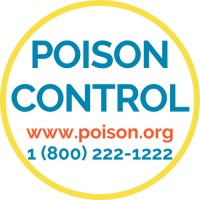
National Capital Poison Center Company Cyber Security Posture
poison.orgThe National Capital Poison Center, founded in 1980, is an independent, private, 501(c)(3) not-for-profit organization and an accredited poison center. Its nurse and pharmacist Certified Specialists in Poison Information provide 24/7 telephone guidance for poison emergencies, free of charge. It also provides online guidance for poison emergencies through the webPOISONCONTROL tool (www.webpoisoncontrol.org), health professional education in toxicology, and poisoning prevention education. Service focuses on the metro DC area with a national scope for projects such as webPOISONCONTROL and The Poison Post® (www.poison.org/the-poison-post). The mission of National Capital Poison Center is to prevent poisonings, save lives, and limit injury from poisoning. In addition to saving lives, Poison Control decreases health care costs for poisoning cases. In 2015, the 55 U.S. poison control centers provided telephone guidance for nearly 2.2 million human poison exposures.
NCPC Company Details
poisoncontrol
23 employees
304
62
Hospitals and Health Care
poison.org
Scan still pending
NAT_1953358
In-progress
Between 800 and 900
This score is AI-generated and less favored by cyber insurers, who prefer the TPRM score.
 NCPC Global Score
NCPC Global Score.png)

National Capital Poison Center Company Scoring based on AI Models
| Model Name | Date | Description | Current Score Difference | Score |
|---|---|---|---|---|
| AVERAGE-Industry | 03-12-2025 | This score represents the average cybersecurity rating of companies already scanned within the same industry. It provides a benchmark to compare an individual company's security posture against its industry peers. | N/A | Between 800 and 900 |
National Capital Poison Center Company Cyber Security News & History
| Entity | Type | Severity | Impact | Seen | Url ID | Details | View |
|---|---|---|---|---|---|---|---|
| National Capital Poison Center | Ransomware | 85 | 4 | 12/2017 | NAT13227223 | Link | |
Rankiteo Explanation : Attack with significant impact with customers data leaksDescription: National Capital Poison suffered from a ransomware attack that involved records of people who called them between January 1, 1997, and October 21, 2017. There have been no reports of actual or attempted misuse of the information, and NCPC is unable to determine whether any of the data in the database was accessed improperly. If the information was provided, the database server includes one or more of the following types of information: caller name, name of the person who may have been exposed to a poison and date of birth, address and phone number, details about the exposure and clinical course, recommendations made to the caller, caller's email address, and, if applicable, treating facility name and medical record number. NCPC did not indicate whether they paid any ransom or whether they attempted to restore from backup. | |||||||
National Capital Poison Center Company Subsidiaries

The National Capital Poison Center, founded in 1980, is an independent, private, 501(c)(3) not-for-profit organization and an accredited poison center. Its nurse and pharmacist Certified Specialists in Poison Information provide 24/7 telephone guidance for poison emergencies, free of charge. It also provides online guidance for poison emergencies through the webPOISONCONTROL tool (www.webpoisoncontrol.org), health professional education in toxicology, and poisoning prevention education. Service focuses on the metro DC area with a national scope for projects such as webPOISONCONTROL and The Poison Post® (www.poison.org/the-poison-post). The mission of National Capital Poison Center is to prevent poisonings, save lives, and limit injury from poisoning. In addition to saving lives, Poison Control decreases health care costs for poisoning cases. In 2015, the 55 U.S. poison control centers provided telephone guidance for nearly 2.2 million human poison exposures.
Access Data Using Our API

Get company history
.png)
NCPC Cyber Security News
Which Federal Programs Are Under Scrutiny? The Budget Office Named 2,600 of Them.
None
What is pink cocaine? Autopsy finds drug in Liam Payne’s body
Poison Control said pink cocaine is often used in a party or club setting and can cause a variety of effects including hallucinations, anxiety, ...
What Is Pink Cocaine? Liam Payne’s Autopsy Reveals He Took the Drug Known as ‘Tusi’ Before His Death
Pink cocaine is a powdered cocktail of drugs that typically includes ecstasy, ketamine, caffeine and a psychedelic drug known as 2-CB.
How much caffeine is too much? Poison centers see spike in calls about kids, energy drinks
None
Lye-poisoning attack in Florida shows cybersecurity gaps in water systems
None
For a South Korean instant noodle brand a first-of-its-kind product recall. Too spicy for Europeans
The noodles “are being recalled as the levels of total capsaicin in the products pose a risk of acute poisoning,” the Danish agency said in a ...
Alzheimer's-like changes found in COVID patients' brains; flu shot, mRNA booster safe together
People who die of severe COVID-19 have brain abnormalities that resemble changes seen in Alzheimer's disease - accumulation of a protein called ...
FDA is investigating nearly three dozen reports of seizures after vaping
Between 2010 and 2019, the FDA received 35 reports of people having seizures after using e-cigarettes. The cause of the seizures is unclear.
Salisbury woman reports parents, claiming they gave children bleach to 'cure autism'
None

NCPC Similar Companies
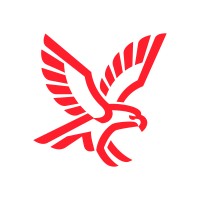
Falck
We are a global market leader in emergency response and healthcare services. 25,000 skilled and experienced professionals work in 26 countries around the world. Characterised by a strong, diverse, and inclusive working environment, we go to work every day with the promise to be there when you need
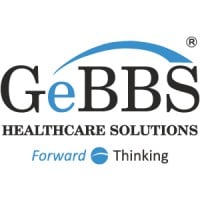
GeBBS Healthcare Solutions
GeBBS Healthcare Solutions is a KLAS rated leading provider of Revenue Cycle Management (RCM) services and Risk Adjustment solutions. GeBBS’ innovative technology, combined with over 14,000-strong global workforce, helps clients improve financial performance, adhere to compliance, and enhance the
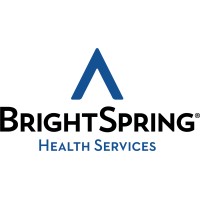
BrightSpring Health Services
BrightSpring is the parent company of a family of services and brands that provides clinical, nonclinical, pharmacy and ancillary care services for people of all ages, health and skill levels across home and community settings. The company is a leading provider of diversified home and community-ba

Vanguard Health Systems
Effective October 1, 2013, Vanguard Health Systems is a part of Tenet Healthcare. Please visit Tenet's LinkedIn page at http://www.linkedin.com/company/5315?trk=tyah&trkInfo=tas%3Atenet%20health Press Release: Tenet Healthcare Corporation (NYSE:THC) has completed its previously announced acquisi
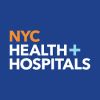
NYC Health + Hospitals
NYC Health + Hospitals is the nation’s largest public health care delivery system. We are an integrated network of hospitals, trauma centers, neighborhood health centers, nursing homes, and post-acute care centers. We are a home care agency and a health plan, MetroPlus. The health system provides es

Sienna Senior Living
At Sienna Senior Living, our Purpose is to cultivate happiness in daily life. Our work does not stop at providing the highest quality of service and care to our residents - it goes much further. Each and every day, we strive to bring happiness into our residents’ lives by enabling our team to put

Frequently Asked Questions (FAQ) on Cybersecurity Incidents
NCPC CyberSecurity History Information
Total Incidents: According to Rankiteo, NCPC has faced 1 incidents in the past.
Incident Types: The types of cybersecurity incidents that have occurred include ['Ransomware'].
Total Financial Loss: The total financial loss from these incidents is estimated to be {total_financial_loss}.
Cybersecurity Posture: The company's overall cybersecurity posture is described as The National Capital Poison Center, founded in 1980, is an independent, private, 501(c)(3) not-for-profit organization and an accredited poison center. Its nurse and pharmacist Certified Specialists in Poison Information provide 24/7 telephone guidance for poison emergencies, free of charge. It also provides online guidance for poison emergencies through the webPOISONCONTROL tool (www.webpoisoncontrol.org), health professional education in toxicology, and poisoning prevention education. Service focuses on the metro DC area with a national scope for projects such as webPOISONCONTROL and The Poison Post® (www.poison.org/the-poison-post). The mission of National Capital Poison Center is to prevent poisonings, save lives, and limit injury from poisoning. In addition to saving lives, Poison Control decreases health care costs for poisoning cases. In 2015, the 55 U.S. poison control centers provided telephone guidance for nearly 2.2 million human poison exposures..
Detection and Response: The company detects and responds to cybersecurity incidents through {description_of_detection_and_response_process}.
Incident Details
Incident 1: Ransomware Attack
Title: {Incident_Title}
Description: {Brief_description_of_the_incident}
Date Detected: {Detection_Date}
Date Publicly Disclosed: {Disclosure_Date}
Date Resolved: {Resolution_Date}
Type: {Type_of_Attack}
Attack Vector: {Attack_Vector}
Vulnerability Exploited: {Vulnerability}
Threat Actor: {Threat_Actor}
Motivation: {Motivation}
Incident 2: Data Breach
Title: {Incident_Title}
Description: {Brief_description_of_the_incident}
Date Detected: {Detection_Date}
Date Publicly Disclosed: {Disclosure_Date}
Date Resolved: {Resolution_Date}
Type: {Type_of_Attack}
Attack Vector: {Attack_Vector}
Vulnerability Exploited: {Vulnerability}
Threat Actor: {Threat_Actor}
Motivation: {Motivation}
Common Attack Types: As of now, the company has not encountered any reported incidents involving common cyberattacks.
Identification of Attack Vectors: The company identifies the attack vectors used in incidents through {description_of_identification_process}.
Impact of the Incidents
Incident 1: Ransomware Attack
Financial Loss: {Financial_Loss}
Data Compromised: {Data_Compromised}
Systems Affected: {Systems_Affected}
Downtime: {Downtime}
Operational Impact: {Operational_Impact}
Conversion Rate Impact: {Conversion_Rate_Impact}
Revenue Loss: {Revenue_Loss}
Customer Complaints: {Customer_Complaints}
Brand Reputation Impact: {Brand_Reputation_Impact}
Legal Liabilities: {Legal_Liabilities}
Identity Theft Risk: {Identity_Theft_Risk}
Payment Information Risk: {Payment_Information_Risk}
Incident 2: Data Breach
Financial Loss: {Financial_Loss}
Data Compromised: {Data_Compromised}
Systems Affected: {Systems_Affected}
Downtime: {Downtime}
Operational Impact: {Operational_Impact}
Conversion Rate Impact: {Conversion_Rate_Impact}
Revenue Loss: {Revenue_Loss}
Customer Complaints: {Customer_Complaints}
Brand Reputation Impact: {Brand_Reputation_Impact}
Legal Liabilities: {Legal_Liabilities}
Identity Theft Risk: {Identity_Theft_Risk}
Payment Information Risk: {Payment_Information_Risk}
Average Financial Loss: The average financial loss per incident is {average_financial_loss}.
Commonly Compromised Data Types: The types of data most commonly compromised in incidents are {list_of_commonly_compromised_data_types}.
Incident 1: Ransomware Attack
Entity Name: {Entity_Name}
Entity Type: {Entity_Type}
Industry: {Industry}
Location: {Location}
Size: {Size}
Customers Affected: {Customers_Affected}
Incident 2: Data Breach
Entity Name: {Entity_Name}
Entity Type: {Entity_Type}
Industry: {Industry}
Location: {Location}
Size: {Size}
Customers Affected: {Customers_Affected}
Response to the Incidents
Incident 1: Ransomware Attack
Incident Response Plan Activated: {Yes/No}
Third Party Assistance: {Yes/No}
Law Enforcement Notified: {Yes/No}
Containment Measures: {Containment_Measures}
Remediation Measures: {Remediation_Measures}
Recovery Measures: {Recovery_Measures}
Communication Strategy: {Communication_Strategy}
Adaptive Behavioral WAF: {Adaptive_Behavioral_WAF}
On-Demand Scrubbing Services: {On_Demand_Scrubbing_Services}
Network Segmentation: {Network_Segmentation}
Enhanced Monitoring: {Enhanced_Monitoring}
Incident 2: Data Breach
Incident Response Plan Activated: {Yes/No}
Third Party Assistance: {Yes/No}
Law Enforcement Notified: {Yes/No}
Containment Measures: {Containment_Measures}
Remediation Measures: {Remediation_Measures}
Recovery Measures: {Recovery_Measures}
Communication Strategy: {Communication_Strategy}
Adaptive Behavioral WAF: {Adaptive_Behavioral_WAF}
On-Demand Scrubbing Services: {On_Demand_Scrubbing_Services}
Network Segmentation: {Network_Segmentation}
Enhanced Monitoring: {Enhanced_Monitoring}
Incident Response Plan: The company's incident response plan is described as {description_of_incident_response_plan}.
Third-Party Assistance: The company involves third-party assistance in incident response through {description_of_third_party_involvement}.
Data Breach Information
Incident 2: Data Breach
Type of Data Compromised: {Type_of_Data}
Number of Records Exposed: {Number_of_Records}
Sensitivity of Data: {Sensitivity_of_Data}
Data Exfiltration: {Yes/No}
Data Encryption: {Yes/No}
File Types Exposed: {File_Types}
Personally Identifiable Information: {Yes/No}
Prevention of Data Exfiltration: The company takes the following measures to prevent data exfiltration: {description_of_prevention_measures}.
Handling of PII Incidents: The company handles incidents involving personally identifiable information (PII) through {description_of_handling_process}.
Ransomware Information
Incident 1: Ransomware Attack
Ransom Demanded: {Ransom_Amount}
Ransom Paid: {Ransom_Paid}
Ransomware Strain: {Ransomware_Strain}
Data Encryption: {Yes/No}
Data Exfiltration: {Yes/No}
Ransom Payment Policy: The company's policy on paying ransoms in ransomware incidents is described as {description_of_ransom_payment_policy}.
Data Recovery from Ransomware: The company recovers data encrypted by ransomware through {description_of_data_recovery_process}.
Regulatory Compliance
Incident 1: Ransomware Attack
Regulations Violated: {Regulations_Violated}
Fines Imposed: {Fines_Imposed}
Legal Actions: {Legal_Actions}
Regulatory Notifications: {Regulatory_Notifications}
Incident 2: Data Breach
Regulations Violated: {Regulations_Violated}
Fines Imposed: {Fines_Imposed}
Legal Actions: {Legal_Actions}
Regulatory Notifications: {Regulatory_Notifications}
Regulatory Frameworks: The company complies with the following regulatory frameworks regarding cybersecurity: {list_of_regulatory_frameworks}.
Ensuring Regulatory Compliance: The company ensures compliance with regulatory requirements through {description_of_compliance_measures}.
Lessons Learned and Recommendations
Incident 1: Ransomware Attack
Lessons Learned: {Lessons_Learned}
Incident 2: Data Breach
Lessons Learned: {Lessons_Learned}
Incident 1: Ransomware Attack
Recommendations: {Recommendations}
Incident 2: Data Breach
Recommendations: {Recommendations}
Key Lessons Learned: The key lessons learned from past incidents are {list_of_key_lessons_learned}.
Implemented Recommendations: The company has implemented the following recommendations to improve cybersecurity: {list_of_implemented_recommendations}.
References
Additional Resources: Stakeholders can find additional resources on cybersecurity best practices at {list_of_additional_resources}.
Investigation Status
Incident 1: Ransomware Attack
Investigation Status: {Investigation_Status}
Incident 2: Data Breach
Investigation Status: {Investigation_Status}
Communication of Investigation Status: The company communicates the status of incident investigations to stakeholders through {description_of_communication_process}.
Stakeholder and Customer Advisories
Incident 1: Ransomware Attack
Stakeholder Advisories: {Stakeholder_Advisories}
Customer Advisories: {Customer_Advisories}
Incident 2: Data Breach
Stakeholder Advisories: {Stakeholder_Advisories}
Customer Advisories: {Customer_Advisories}
Advisories Provided: The company provides the following advisories to stakeholders and customers following an incident: {description_of_advisories_provided}.
Initial Access Broker
Incident 1: Ransomware Attack
Entry Point: {Entry_Point}
Reconnaissance Period: {Reconnaissance_Period}
Backdoors Established: {Backdoors_Established}
High Value Targets: {High_Value_Targets}
Data Sold on Dark Web: {Yes/No}
Incident 2: Data Breach
Entry Point: {Entry_Point}
Reconnaissance Period: {Reconnaissance_Period}
Backdoors Established: {Backdoors_Established}
High Value Targets: {High_Value_Targets}
Data Sold on Dark Web: {Yes/No}
Monitoring and Mitigation of Initial Access Brokers: The company monitors and mitigates the activities of initial access brokers through {description_of_monitoring_and_mitigation_measures}.
Post-Incident Analysis
Incident 1: Ransomware Attack
Root Causes: {Root_Causes}
Corrective Actions: {Corrective_Actions}
Incident 2: Data Breach
Root Causes: {Root_Causes}
Corrective Actions: {Corrective_Actions}
Post-Incident Analysis Process: The company's process for conducting post-incident analysis is described as {description_of_post_incident_analysis_process}.
Corrective Actions Taken: The company has taken the following corrective actions based on post-incident analysis: {list_of_corrective_actions_taken}.
Additional Questions
General Information
Ransom Payment History: The company has {paid/not_paid} ransoms in the past.
Last Ransom Demanded: The amount of the last ransom demanded was {last_ransom_amount}.
Last Attacking Group: The attacking group in the last incident was {last_attacking_group}.
Incident Details
Most Recent Incident Detected: The most recent incident detected was on {most_recent_incident_detected_date}.
Most Recent Incident Publicly Disclosed: The most recent incident publicly disclosed was on {most_recent_incident_publicly_disclosed_date}.
Most Recent Incident Resolved: The most recent incident resolved was on {most_recent_incident_resolved_date}.
Impact of the Incidents
Highest Financial Loss: The highest financial loss from an incident was {highest_financial_loss}.
Most Significant Data Compromised: The most significant data compromised in an incident was {most_significant_data_compromised}.
Most Significant System Affected: The most significant system affected in an incident was {most_significant_system_affected}.
Response to the Incidents
Third-Party Assistance in Most Recent Incident: The third-party assistance involved in the most recent incident was {third_party_assistance_in_most_recent_incident}.
Containment Measures in Most Recent Incident: The containment measures taken in the most recent incident were {containment_measures_in_most_recent_incident}.
Data Breach Information
Most Sensitive Data Compromised: The most sensitive data compromised in a breach was {most_sensitive_data_compromised}.
Number of Records Exposed: The number of records exposed in the most significant breach was {number_of_records_exposed}.
Ransomware Information
Highest Ransom Demanded: The highest ransom demanded in a ransomware incident was {highest_ransom_demanded}.
Highest Ransom Paid: The highest ransom paid in a ransomware incident was {highest_ransom_paid}.
Regulatory Compliance
Highest Fine Imposed: The highest fine imposed for a regulatory violation was {highest_fine_imposed}.
Most Significant Legal Action: The most significant legal action taken for a regulatory violation was {most_significant_legal_action}.
Lessons Learned and Recommendations
Most Significant Lesson Learned: The most significant lesson learned from past incidents was {most_significant_lesson_learned}.
Most Significant Recommendation Implemented: The most significant recommendation implemented to improve cybersecurity was {most_significant_recommendation_implemented}.
References
Most Recent Source: The most recent source of information about an incident is {most_recent_source}.
Most Recent URL for Additional Resources: The most recent URL for additional resources on cybersecurity best practices is {most_recent_url}.
Investigation Status
Current Status of Most Recent Investigation: The current status of the most recent investigation is {current_status_of_most_recent_investigation}.
Stakeholder and Customer Advisories
Most Recent Stakeholder Advisory: The most recent stakeholder advisory issued was {most_recent_stakeholder_advisory}.
Most Recent Customer Advisory: The most recent customer advisory issued was {most_recent_customer_advisory}.
Initial Access Broker
Most Recent Entry Point: The most recent entry point used by an initial access broker was {most_recent_entry_point}.
Most Recent Reconnaissance Period: The most recent reconnaissance period for an incident was {most_recent_reconnaissance_period}.
Post-Incident Analysis
Most Significant Root Cause: The most significant root cause identified in post-incident analysis was {most_significant_root_cause}.
Most Significant Corrective Action: The most significant corrective action taken based on post-incident analysis was {most_significant_corrective_action}.
What Do We Measure?
















Every week, Rankiteo analyzes billions of signals to give organizations a sharper, faster view of emerging risks. With deeper, more actionable intelligence at their fingertips, security teams can outpace threat actors, respond instantly to Zero-Day attacks, and dramatically shrink their risk exposure window.
These are some of the factors we use to calculate the overall score:
Identify exposed access points, detect misconfigured SSL certificates, and uncover vulnerabilities across the network infrastructure.
Gain visibility into the software components used within an organization to detect vulnerabilities, manage risk, and ensure supply chain security.
Monitor and manage all IT assets and their configurations to ensure accurate, real-time visibility across the company's technology environment.
Leverage real-time insights on active threats, malware campaigns, and emerging vulnerabilities to proactively defend against evolving cyberattacks.




